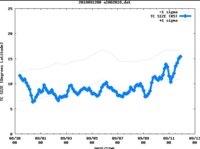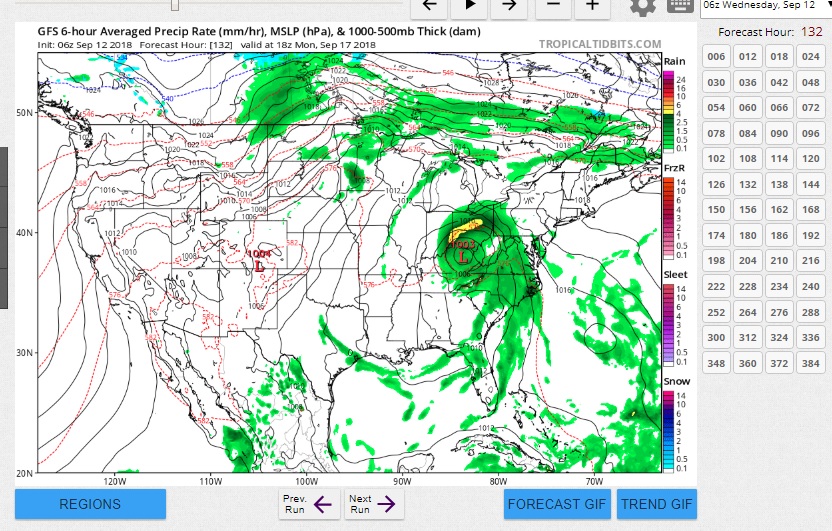- Thread starter
- #51
greybeard
Herd Master
No..different models are looking at different aspects. The consensus part comes by looking at the ensemble map. Even with it tho, the steering currents being expected to collapse about the same time Florence hits land throws a big ? mark into the picture.Just when you think it can't get any crazier, some model runs start showing a building high pressure ridge stopping all forward progress just off the NC coast, then a slow southward track with actual landfall down near Georgia. I thought the models were supposed to converge the closer you get to landfall, not diverge.
By the usual standards, Florence is just average size. From today's discussion at 8:45EDT:
"Florence’s top sustained winds were raised to 140 mph by the National Hurricane Center at 5 pm Tuesday. Sustained hurricane-force winds now extend up to 60 miles out from Florence’s center, and tropical-storm-force winds extend out 175 miles. These numbers may grow even larger as Florence matures and expands. At its current size, Florence rates as an average-sized hurricane."

Florence's size is indicated by the heavy blue line... between the dotted lines is "average" (actually, Flo is closer the lower average than a higher average.
When Ike was a Cat 4 hurricane, it had hurricane force winds (minimum of 75 mph) extending 120 miles from the eye and tropical storm winds (39mph minimum) extended 175 miles from the center of the storm.
Florence has:
Florence’s top sustained winds were raised to 140 mph by the National Hurricane Center at 5 pm Tuesday. Sustained hurricane-force winds 75mph minimum) now extend up to 60 miles out from Florence’s center, with tropical storm rated winds reaching nearly 175 miles from the eye toward the NW quadrant
This may change of course once the eye wall replacement is 100% coalesced and the eye itself contracts back to a more efficient size (the eye right now is about 30 miles across, but only because the original eyewall collapsed and was replaced by a new eyewall further out)
It definitely could stall, whether it happens just offshore or once it makes landfall is the big question and concern. Early Friday onward is going to be a puzzle..
As Florence nears the coast on Thursday night, wind shear may increase to a moderate 10 – 20 knots, and the shallower waters near the coast will provide less oceanic fuel. Florence will most likely be a Category 3 near landfall—assuming it crosses the coast, that is. The steering currents driving Florence toward the East Coast will collapse on Friday, and models now agree the storm is likely to stall somewhere within 100 miles on either side of the coast, perhaps for one or two days.
The 12Z Tuesday run of the European model introduced a new and very distressing possibility: Florence stalling just offshore of North Carolina near Wilmington for roughly a day, then moving southwestward along and just off the South Carolina coast on Saturday, and finally making landfall close to Savannah, Georgia, on Sunday—all while still a hurricane. This outlandish-seeming prospect gained support from the 18Z run of the GFS model. It painted a very similar picture, with a landfall a bit farther north, near Charleston, on Sunday. The 18Z track from the experimental GFS FV3 model is very similar to the GFS track.
Last edited:





